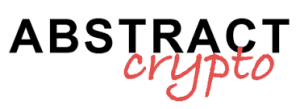Wyoming opens a new phase in the stablecoin market with the debut of the Frontier Stable Token (FRNT), the first digital currency pegged to the dollar issued by a US State. The project includes a 2% overcollateralized reserve, monthly attestations, and simultaneous distribution on seven blockchains, aiming for an institutional and interoperable model. The first integrations on exchanges are expected shortly after the launch; according to CoinDesk, Kraken will enable FRNT on Solana in the early days of distribution.
According to the official statement from the Wyoming Stable Token Commission published on August 19, 2025, the project’s mainnet was activated simultaneously on the seven declared networks. The statement also highlights technical partners and the initial roadmap. Industry analysts note that a multi-chain model with monthly attestations and a 2% buffer represents a significant experiment in terms of institutional trust in stablecoins.
What is the stablecoin FRNT and why it matters now
FRNT is a stablecoin pegged 1:1 to the US dollar, issued and supervised by the State of Wyoming. The innovation is not just technological: for the first time, a US state entity is directly involved in the issuance of a stable token, offering a concrete example of integration between public finance and blockchain infrastructures. In this context, it is proposed as a benchmark for transparency, governance, and interoperability, with an approach that comes at a crucial moment for the regulatory framework.
How it works: issuance, reserves, and interoperability
Emission and burn
- Emission: new FRNT are minted based on the dollars deposited in the reserves.
- Reimbursement: the tokens are burned in case of redemption, with payment in USD.
- Objective: maintain the 1:1 peg through mint/burn processes verifiable on-chain.
Reserves and collateralization at 2%
The application of overcollateralization at 2% implies that the value of the assets in reserve exceeds the circulating FRNT by 2%. In practice, for every 100 dollars of FRNT issued, the reserves should amount to at least 102 dollars. It should be noted that this buffer aims to cover costs and the volatility of the returns of the underlying assets, increasing the safety margin without immobilizing excess capital.
- Reserve management: according to the commission’s statement, the management is entrusted to Franklin Advisers.
- Attestations: provided monthly by The Network Firm and published in periodic reports (indicated in the official release).
- Methodological note: the attestations do not equate to a full audit, but serve to periodically verify the alignment between issued tokens and reserves.
Interoperability between chains
FRNT was born as a multi-chain project and uses cross-chain messaging infrastructures, such as LayerZero, for reliable transfers between networks. An interesting aspect is the reduction of liquidity fragmentation, with simpler integration for wallets and exchanges.
To delve deeper into the technical methods of cross-chain messaging, see the official documentation of LayerZero.
Where it is available: the 7 blockchains at launch
- Ethereum
- Solana
- Arbitrum
- Avalanche
- Base
- Optimism
- Polygon
According to reports, Kraken will enable FRNT on Solana in the early stages of distribution, promoting a start with native liquidity on a high-throughput network.
Transparency: monthly attestations and custody of reserves
Transparency is a pillar of the Wyoming project:
- Monthly attestations by The Network Firm, with the publication of periodic reports on circulation and reserves (first report expected within 30 days of launch).
- Professional management of assets entrusted to Franklin Advisers, as indicated in the official statement of the Wyoming Stable Token Commission on 08/19/2025.
- Disclosure regarding any discrepancies between issued tokens and assets in custody, accompanied by recovery plans.
The methodology adopted, with particular attention to the quality and granularity of the data (type of asset, maturities, liquidity, custodian), will be decisive in determining the level of market confidence. We suggest monitoring the first monthly report and the published reconciliations to verify the detailed composition of the reserves (insight on attestations and audits).
Regulatory framework: what the GENIUS Act provides
The launch follows the proposal of the GENIUS Act, a draft federal law that introduces transparency and compliance standards for stablecoin. This regulation aims to reduce regulatory uncertainty for authorized issuers and to define reporting requirements, paving the way for public initiatives like FRNT.
Impact on the market
With a clearer federal framework, the institutional adoption of regulated stablecoins could accelerate. Common standards reduce fragmentation between states and facilitate the entry of traditional financial operators. FRNT, by its public and multi-chain nature, is configured as a visible test to evaluate costs, times, and governance of a “state” issuance.
Comparison: where does the 2% of FRNT stand
- Fiat-backed 1:1 (e.g., models like USDC/USDT): they maintain reserves equivalent to the circulating supply with periodic attestations; some issuers also include a surplus or own capital to cover operational risks.
- Crypto-collateral (e.g., historical models like DAI): usually require a high overcollateralization (often over 120%) to manage the volatility of crypto assets; while they offer greater resilience, on the other hand, they are less efficient in the use of capital.
- FRNT: applies a 2% buffer on presumably highly liquid and low-risk assets. The trade-off consists of greater capital efficiency in exchange for a reduced cushion in scenarios of extreme stress.
The evaluation of the 2% buffer will depend on the composition of reserves, the settlement times in case of redemption, and the quality of the governance. Monthly data and reports will be essential to assess the robustness of the model.
Advantages, risks, and open issues
- Advantages: state institutional brand, monthly attestations, presence on multiple blockchains at launch, and potential rapid integration into CeFi/DeFi circuits.
- Risks: limited buffer to 2%, operational and custody risks, and a possible centralization in strategic decisions in the public domain.
- Open nodes: detailed definition of the composition of reserves, timing and priority of reimbursement, publication of smart contract addresses, policy on sanctions/blacklist, and methods of responding to any unforeseen market events.
Governance and availability
The supervision of the project is entrusted to the Wyoming Stable Token Commission. FRNT has already been launched on the mainnet and distribution across various networks is underway. It should be noted that exchanges will begin trading progressively after day one, prioritizing the technical integrations already completed.
What to monitor in the coming weeks
- First monthly report by The Network Firm: methodology, asset composition, and reconciliations (expected within 30 days from launch).
- Publication of addresses of smart contracts and official pages on explorer.
- Liquidity on exchanges and trend of the spread on the 1:1 peg.
- On-chain usage: volumes on bridges, DEX, and lending protocols.
- Regulatory clarifications related to any geographical limits, KYC/AML policies, and sanctions.


